Explore Cat Tien National Park highlight mammals, from the elusive Black-shanked Douc Langur to the rare Sunda Pangolin, through diverse habitats and guided tours. Let get start
Cat Tien National Park, a UNESCO-recognized biosphere reserve located in southern Vietnam, is renowned for its rich biodiversity. This park is one of the most important protected areas in Vietnam, housing a wide array of species, including over 100 species of mammals. Cat Tien ranks among the top biodiversity hotspots not only in Vietnam but also in Southeast Asia and the world. The park’s ecosystems range from dense forests to wetlands, providing essential habitats for many endangered species.
Vietnam is home to a diverse range of mammals, but Cat Tien stands out for its concentration of rare and endangered species. Among the mammals found in the park, numerous species are listed as endangered or critically endangered on the IUCN Red List, reflecting the global significance of the area in terms of wildlife conservation. In total, more than 25 mammal species in Cat Tien are considered endangered, with several species also included in the Vietnam Red Data Book.
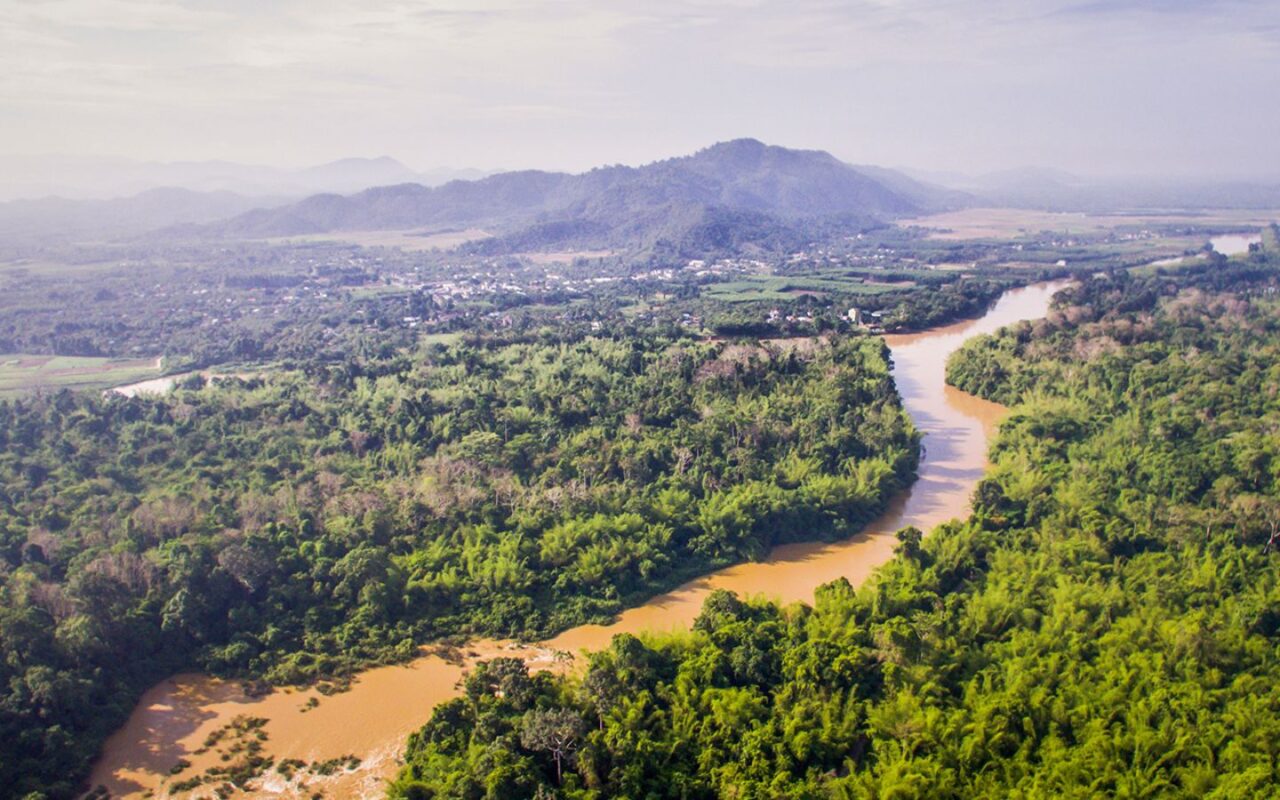
The Vietnam Red Data Book is a comprehensive listing of species that are at risk of extinction in Vietnam. Many of the mammals in Cat Tien, such as the Asian elephant, Sunda pangolin, and various primates, are included in this important conservation resource. The park plays a crucial role in protecting these species from further decline.
Despite the unfortunate extinction of the Indochinese tiger and Javan rhinoceros in Cat Tien, the park continues to be a vital sanctuary for numerous mammals. Ongoing conservation efforts aim to preserve the remaining species, highlighting the park’s global and national significance in biodiversity conservation.
Part 1: Habitats in Cat Tien National Park
Cat Tien National Park is a mosaic of diverse habitats, each supporting a unique range of species. The park’s varying ecosystems create ideal conditions for many mammal species, making it one of the most ecologically important areas in Southeast Asia. The variety of habitats, from dense forests to expansive wetlands, provides critical shelter, food sources, and breeding grounds for the park’s mammals.
Here’s a closer look at the major habitats within Cat Tien National Park:
1. Evergreen Forests
Evergreen forests dominate large portions of Cat Tien, particularly in areas with high rainfall. These dense, tropical forests remain lush and green throughout the year, providing a haven for numerous species. Black-shanked douc langurs, Elliot’s silver langurs, and red-cheeked gibbons are often found swinging through the upper canopy of these forests. The evergreen forest also shelters smaller mammals like the Sunda pangolin and the nocturnal pygmy slow loris, which thrive in the dense vegetation.
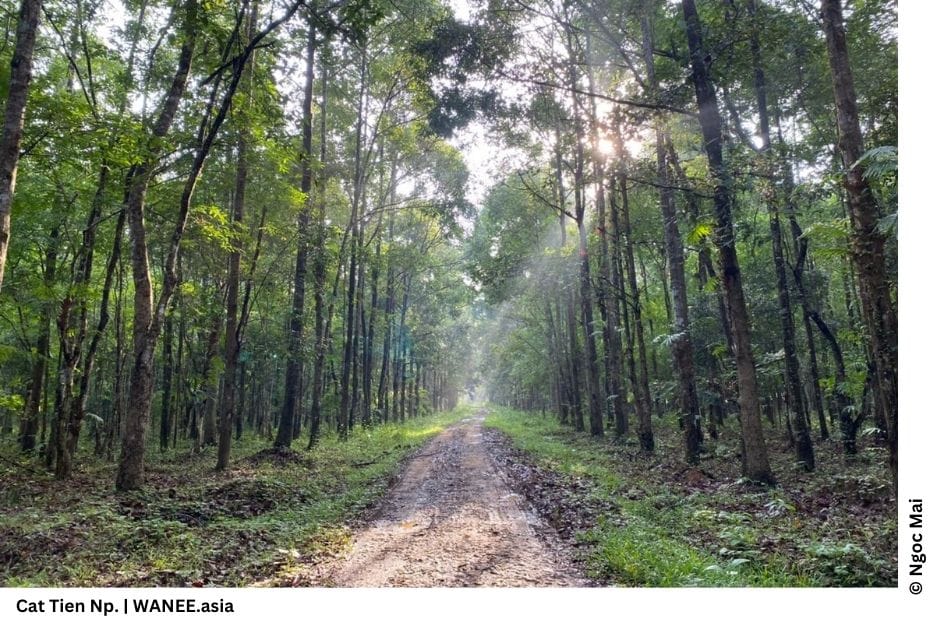
2. Semi-Evergreen Forests
Located in drier parts of the park, semi-evergreen forests are a transitional zone between evergreen forests and grasslands. These areas have a mix of deciduous trees that shed their leaves during the dry season and evergreen trees that retain their foliage year-round. Asian elephants and gaur (Indian bison) are commonly found grazing in the semi-evergreen forests, while species like the Javan mongoose and crab-eating mongoose forage along the forest floor.
3. Wetlands
Wetlands are among the most vital ecosystems in Cat Tien, particularly the areas around Bau Sau (Crocodile Lake) and Bau Chim (Bird Lake). These freshwater wetlands support a rich array of biodiversity and are home to species like the smooth-coated otter and the small-clawed otter, both of which rely on the wetlands for hunting fish and other aquatic prey. These wetlands also provide feeding grounds for various ungulates, such as the large-antlered muntjac, which can often be seen near water sources.
4. Swamp Areas
Swamps in Cat Tien are typically flooded for a large portion of the year and serve as important breeding grounds for both aquatic and terrestrial species. Civets and porcupines are frequent visitors to the swamp edges, where they forage for food. The swamp areas also attract species like the masked palm civet and common palm civet, which thrive in these humid environments.
5. Dry Grasslands
The park’s dry grasslands are open areas that are ideal for herbivores like the gaur and large-antlered muntjac, as well as smaller mammals such as the lesser mousedeer. These grasslands are crucial for grazing species, which help maintain the ecosystem by keeping vegetation levels in check. Predators like the Javan yellow-throated marten may also be seen hunting in the grasslands.
6. Wet Grasslands
Wet grasslands, typically found in low-lying areas of the park, are seasonal habitats that become flooded during the wet season. These areas are important for the park’s mammal populations, particularly during the rainy season when they provide an abundance of fresh grass for grazers. Asian elephants are occasionally spotted in these areas, using the wet grasslands as feeding grounds.
7. Bamboo Forests
Bamboo forests in Cat Tien provide an entirely different environment from the evergreen and semi-evergreen forests. These forests are home to species like the Pallas’s squirrel and the Indian giant squirrel, which can be seen darting through the bamboo. Bamboo forests are also frequented by larger mammals such as gaur and muntjacs, which graze on the understory vegetation.
8. Secondary Forests
Secondary forests are areas that have regenerated after being disturbed by human activity or natural events. These forests are particularly important for species like the pygmy slow loris, which rely on dense, low-level foliage for camouflage and protection. The regeneration of these areas is crucial for maintaining biodiversity, and they are often a focus of the park’s reforestation efforts.
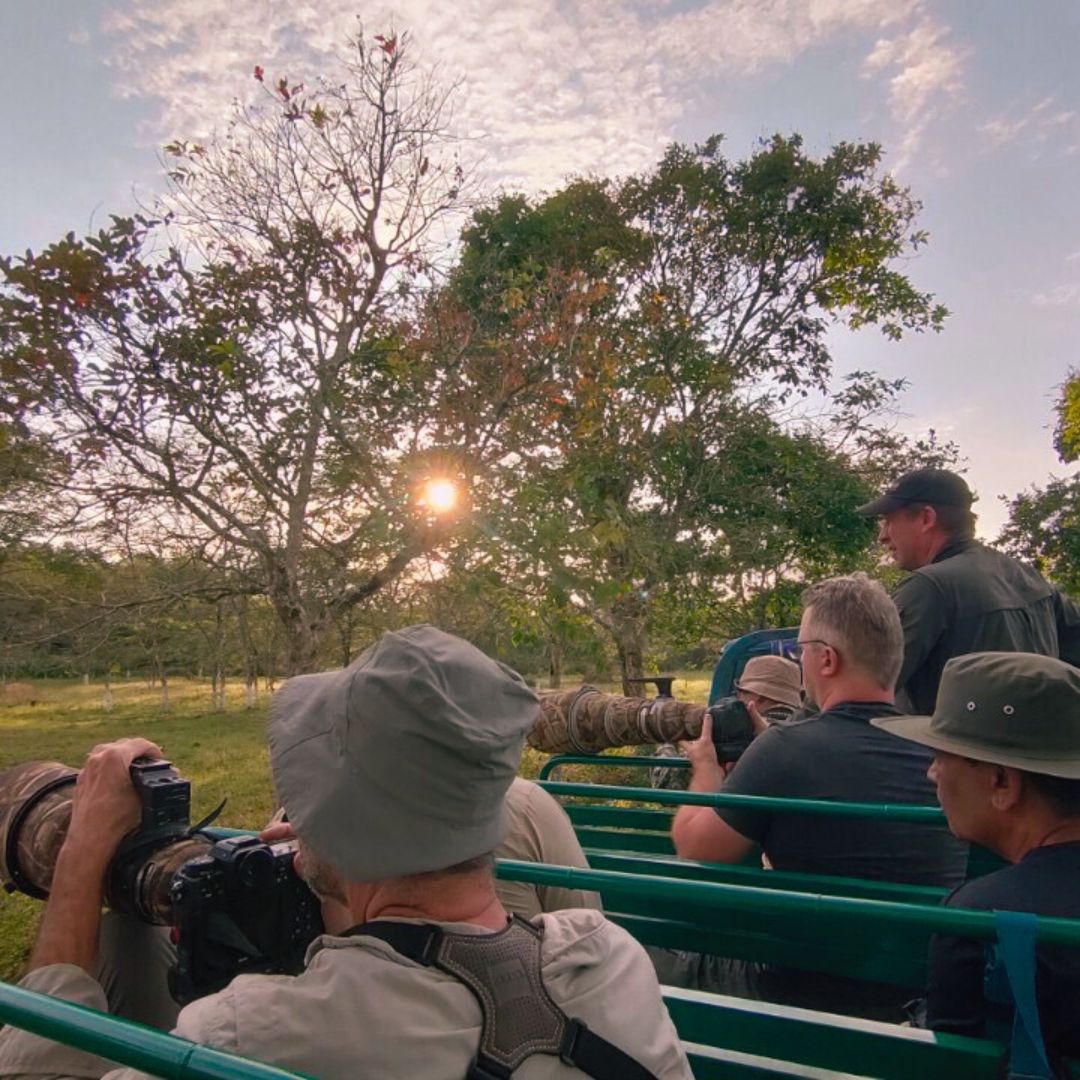
The diverse habitats of Cat Tien National Park play a critical role in supporting its wide range of mammal species. Each habitat type offers a unique environment for different mammals, providing the shelter, food, and breeding grounds necessary for their survival. Protecting these habitats is essential for conserving the park’s biodiversity and ensuring the long-term survival of its many endangered species.
Key Cat Tien National Park Highlight Mammals
- Pangolins: Sunda Pangolin
- Location Encounter: Primarily found in the dense evergreen forests of Cat Tien, this nocturnal species is most likely encountered during night tours.
- Flying Lemurs: Malayan Flying Lemur
- Location Encounter: Frequently spotted gliding between trees in the lowland forests, especially during early morning or dusk.
- Loris: Pygmy Slow Loris
- Location Encounter: Seen during guided night walks in the park’s secondary forests. Their slow movements and large eyes make them a favorite for night safaris.
- Langurs: Black-shanked Douc Langur, Elliot’s Silver Langur
- Location Encounter: These species are often found in the upper canopy along the park’s trails. Jeep safaris and morning treks provide the best chance to see them.
- Gibbons: Red-cheeked Gibbon (Southern Yellow-cheeked Gibbon)
- Location Encounter: Gibbons are heard before they are seen. Their characteristic song can be experienced at dawn during morning treks.
- Elephants: Asian Elephant
- Location Encounter: Though rare, they can sometimes be seen near the park’s grasslands and open areas, especially along the river trails.
- Mongooses: Javan Mongoose, Crab-eating Mongoose
- Location Encounter: Commonly sighted near water sources like rivers and streams during early morning wildlife tours.
- Otters: Small-clawed Otter, Smooth-coated Otter
- Location Encounter: Seen around the park’s wetlands, particularly near Bau Sau (Crocodile Lake) and Bau Chim (Bird Lake).
- Martens: Javan Yellow-throated Marten
- Location Encounter: Found in the dense forest regions, usually spotted during jeep safaris.
- Bears: Asiatic Black Bear
- Location Encounter: Rare but possible sightings during trekking in the deeper parts of the park.
- Civets: Masked Palm Civet, Common Palm Civet
- Location Encounter: Civets are commonly encountered during night safaris. They are seen foraging near the park’s headquarters and forest edges.
- Ungulates: Gaur, Large-antlered Muntjac, Lesser Mousedeer
- Location Encounter: Gaur and Muntjac can be found grazing in the park’s open grasslands, while the Lesser Mousedeer is more elusive, requiring quiet observation during forest walks.
- Squirrels: Pallas’s Squirrel, Indian Giant Squirrel
- Location Encounter: Frequently seen darting through the trees along the park’s trails during both day and night tours.
- Porcupines: Malayan Porcupine
- Location Encounter: Most often spotted during night tours, as they forage near forest edges and clearings.
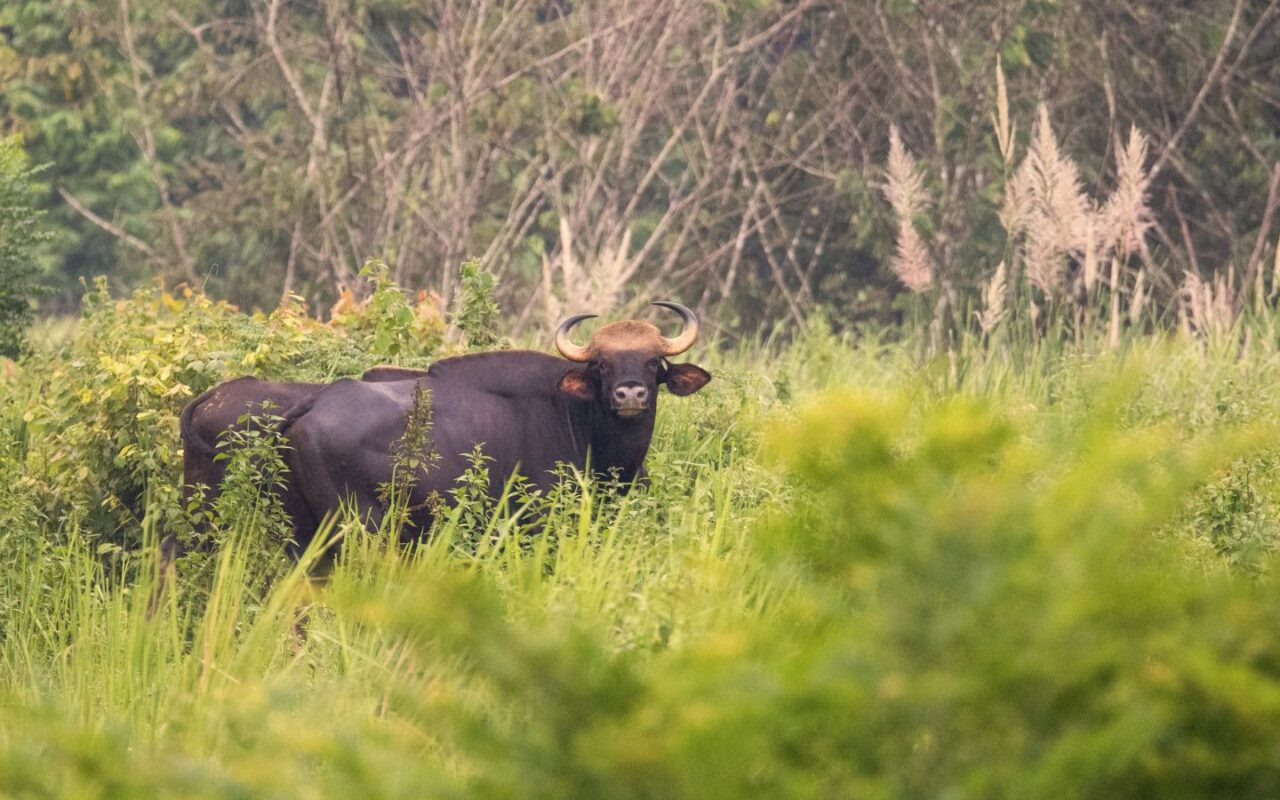
Part 3: Routes to Encounter Mammals
1. Night Tours
Night safari tours offer two options:
- The first option takes visitors to the grasslands, where you can search for ungulates such as gaur and muntjac, as well as mongooses.
- The second option heads directly to the Uncle Dong Tree, a prime spot for encountering marten, pangolin, and civets. This route is perfect for those particularly interested in carnivorous mammals.
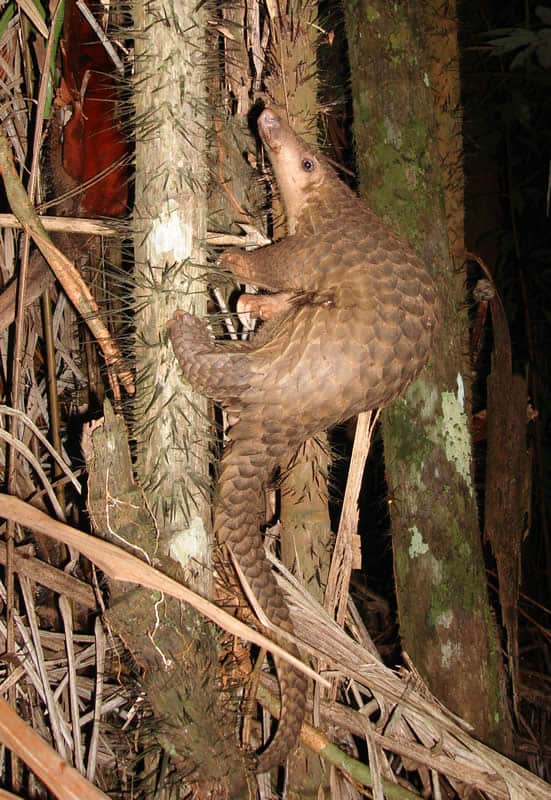
2. Jeep Safaris
Daytime jeep safaris offer great chances to encounter various mammals along the route to Heaven Rapids and the trail leading to Crocodile Lake. These areas are rich in wildlife and provide excellent viewing opportunities.
3. Morning Treks
For primates, morning treks are the best way to hear and possibly see red-cheeked gibbons and other langurs. Their morning calls make for an unforgettable experience.
4. River Trails and Wetland Areas
Along the river trails near Bau Sau and Bau Chim, visitors can spot otters and mongooses foraging near the water sources.
5. Grassland Walks
Grassland walks are ideal for observing large grazers such as gaur and muntjacs. The open areas are perfect for viewing these animals in their natural habitat.
6. Forest Walks
Exploring the park’s forests, including evergreen and bamboo areas, offers a chance to see many other mammals, including rare and unexpected species that are more elusive.
Part 4: Conservation Programs in Cat Tien National Park
Cat Tien National Park plays a critical role in the conservation of Vietnam’s endangered wildlife, particularly its mammal species. A number of conservation programs and initiatives are in place to protect these animals and their habitats from threats such as poaching, habitat loss, and illegal wildlife trade. Here’s an overview of the key conservation efforts within the park:
1. Habitat Protection and Restoration
One of the primary focuses in Cat Tien is the protection and restoration of critical habitats. The park’s diverse ecosystems, including evergreen forests, wetlands, and grasslands, are carefully managed to ensure they continue to support a wide range of mammal species. Reforestation programs are particularly important in secondary forests that have been disturbed by human activities. These efforts aim to restore native vegetation, providing essential cover and food sources for mammals like the pygmy slow loris, langurs, and gibbons.
2. Anti-Poaching and Wildlife Monitoring
Illegal hunting and poaching are major threats to many of the park’s mammals, particularly highly trafficked species such as the Sunda pangolin and the Asiatic black bear. To combat this, Cat Tien National Park has implemented a robust anti-poaching program that includes regular patrols by park rangers and surveillance efforts. These measures help to deter poachers and ensure the safety of vulnerable species. Wildlife monitoring programs are also in place to track the populations of endangered species, which helps conservationists assess the effectiveness of their efforts and make informed decisions about management strategies.
3. Community Engagement and Education
Engaging local communities is a key component of the park’s conservation strategy. Many of the people living near Cat Tien depend on the park’s resources for their livelihoods, which can sometimes lead to human-wildlife conflicts. The park works closely with these communities to raise awareness about the importance of wildlife conservation and to find sustainable ways for them to coexist with the park’s animals. Initiatives such as eco-friendly farming practices and community-based tourism have been developed to provide alternative sources of income that do not harm the environment.
4. Wildlife Rescue and Rehabilitation
In addition to habitat protection, Cat Tien National Park also operates wildlife rescue and rehabilitation centers. These centers focus on rescuing animals from the illegal pet trade or those injured by poachers, particularly species like gibbons, slow lorises, and bears. The goal of these centers is to rehabilitate the animals and, where possible, release them back into the wild. This effort is essential for maintaining genetic diversity and bolstering populations of endangered mammals.
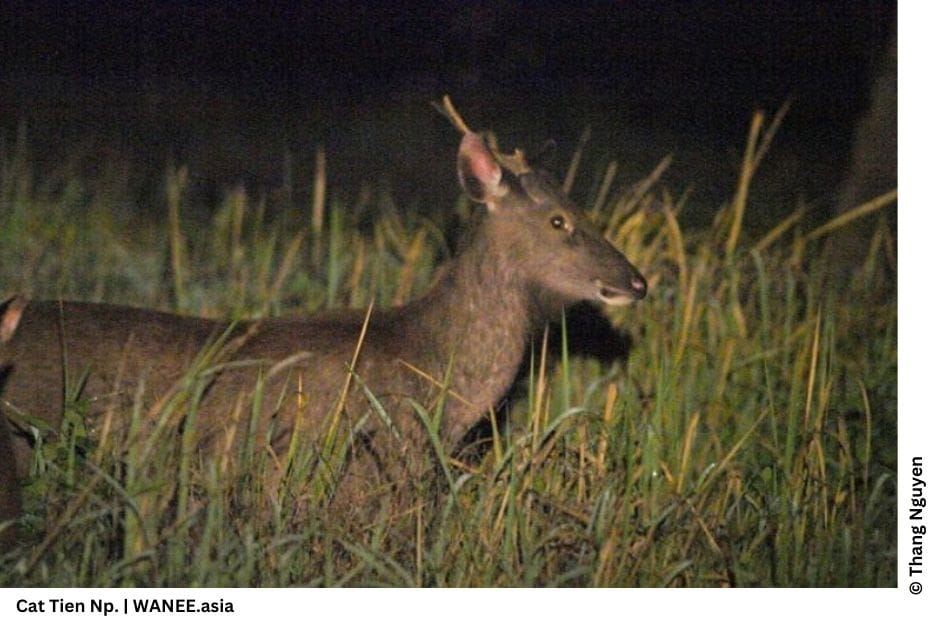
Check the website of Cat Tien National Park to read more
And the project to conservation here
5. WANEE Go-WILD Initiative
WANEE Go-WILD, operated by WANEE VN CO., LTD. in Ho Chi Minh City, offers immersive wildlife tours focused on sustainable ecotourism. Specializing in birding, bird photography, herping, and primate-watching, our tours provide deep insights into Vietnam’s wildlife, guided by experts.
We offer a variety of tours, from scheduled itineraries to tailor-made experiences. Our focus is on delivering rich encounters with Vietnam’s avian, reptilian, and mammalian species, while ensuring affordability.
5% of profits support the Kid_hub project, which educates Vietnamese children about nature through annual lessons and outdoor experiences.
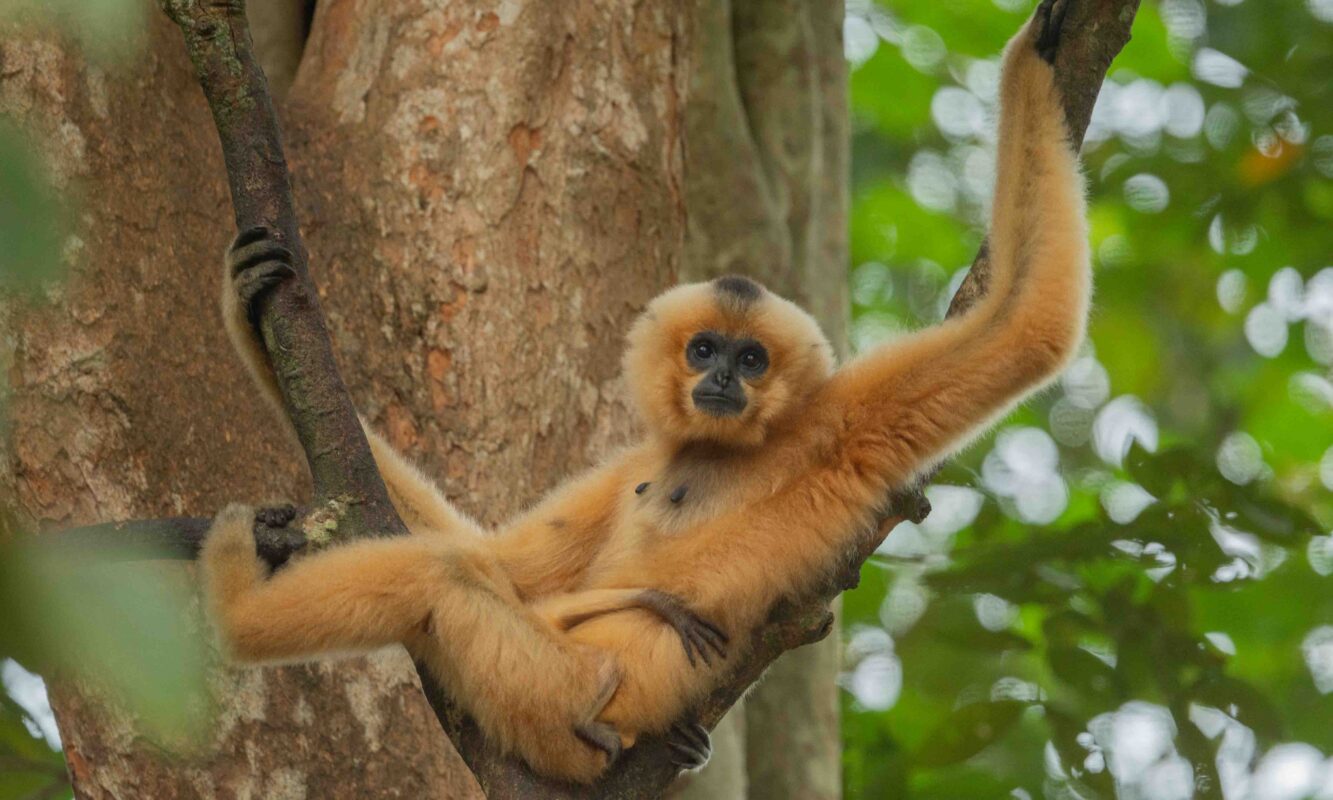
6. Collaborative Conservation Partnerships
Cat Tien works in collaboration with national and international conservation organizations to strengthen its conservation efforts. Partnerships with groups such as the World Wildlife Fund (WWF) and the IUCN (International Union for Conservation of Nature) bring in additional expertise and resources to help tackle the challenges faced by the park’s wildlife. These collaborations help enhance the effectiveness of programs aimed at protecting endangered species and ensuring the long-term survival of Cat Tien’s unique ecosystems.
Part 5: Tours for Wildlife and Primates in Cat Tien National Park
Cat Tien National Park offers a range of tailored tours for nature enthusiasts and photographers, providing a chance to experience its diverse wildlife. Below are three standout tours designed to immerse visitors in the park’s ecosystems and wildlife.
1. [3D – 2N] Primate Watching Tour
- Duration: 3 days, 2 nights
- Key Activities: Early morning treks, jeep safaris, and evening walks through the park’s evergreen forests and grasslands, focusing on the park’s rich primate population.
- Special Highlights: Expect to encounter species such as the Black-shanked Douc Langur, Southern Yellow-cheeked Gibbon, and Pygmy Slow Loris. The tour emphasizes photography and wildlife observation during peak activity times (sunrise and sunset).
- Accommodations: Comfortable stays in eco-lodges within the park.
- Price Information: Please provide rates per person, including any group discounts.
2. [3 Days] Wildlife Tour in Cat Tien National Park
- Duration: 3 days
- Key Activities: A mix of jeep safaris, jungle treks, and night safaris. The tour covers the park’s multiple ecosystems, including dense forests, wetlands, and grasslands.
- Special Highlights: This tour offers opportunities to see a wide range of wildlife, including the Gaur, Asian Elephant, Small-clawed Otter, and Malayan Flying Lemur. Night safaris increase the chances of encountering nocturnal species, while jeep safaris allow for observation of larger mammals during the day.
- Accommodations: Eco-lodges in Cat Tien National Park.
- Pricing Information:
- Group Size 1: $900 per person
- Group Size 2: $690 per person
- Group Size 3: $630 per person
- Group Size 4: $570 per person
- Group Size 5: $510 per person
- Group Size 6: $450 per person
- Children (4-12 years): 70% of adult price
- Children (0-3 years): Free
3. [3 Days] Primates Photography Tour: Black-shanked Douc Langur in Cat Tien NP
- Duration: 3 days
- Key Activities: Designed specifically for wildlife photographers, this tour focuses on capturing images of the Black-shanked Douc Langur and other primates. Early morning jeep rides and guided forest treks offer the best conditions for photography, with expert guides available to provide tips.
- Special Highlights: Alongside the Black-shanked Douc Langur, participants may photograph species like the Southern Yellow-cheeked Gibbon and Elliot’s Silver Langur. The tour is designed to maximize photography opportunities in optimal lighting conditions.
- Accommodations: Eco-lodges with easy access to prime photography locations within the park.
- Price Information: Please provide pricing details for individual and group bookings.
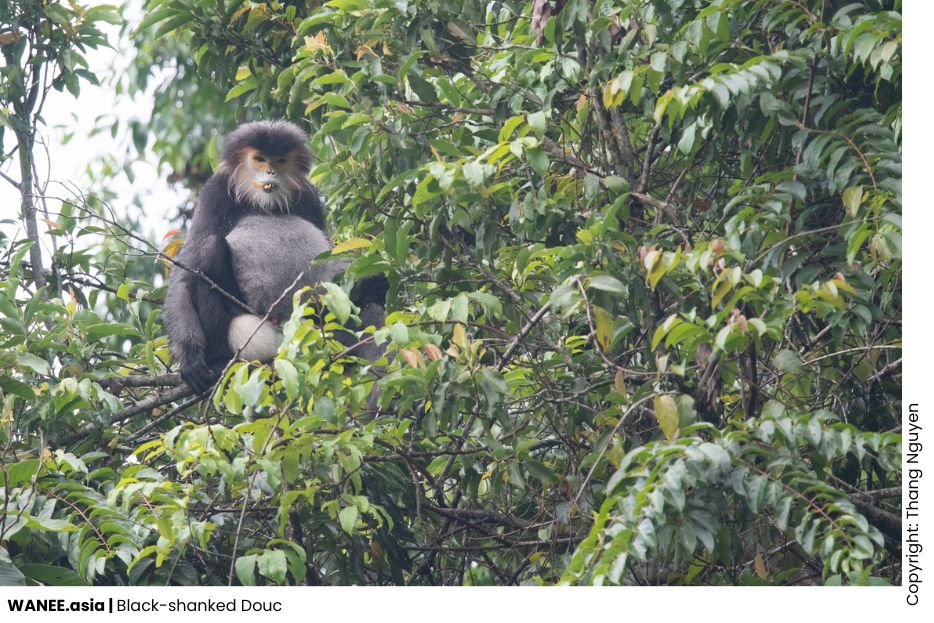
Click here if you wanna to see another tour
Or give another suggest for tour in this link
Conclusion
Cat Tien National Park stands as one of Vietnam’s most important conservation areas, home to a diverse array of mammals and ecosystems that make it a key destination for wildlife enthusiasts and conservationists alike. From the elusive Sunda pangolin to the majestic Asian elephant, the park’s wildlife is not only breathtaking but also critically endangered, highlighting the importance of ongoing conservation efforts.
Through dedicated programs focused on habitat protection, anti-poaching initiatives, and community engagement, Cat Tien is actively working to preserve its unique biodiversity. Tours such as the Primate Watching Tour, Wildlife Tour, and Primates Photography Tour offer visitors an immersive experience while contributing directly to conservation. The WANEE Go-WILD initiative also plays a significant role in promoting sustainable ecotourism, providing educational opportunities for children, and fostering a deeper appreciation for Vietnam’s wildlife.
As Cat Tien National Park continues to protect and rehabilitate its fragile ecosystems, the collaboration between ecotourism, conservation programs, and local communities remains vital. Visitors to the park can enjoy unforgettable wildlife encounters while supporting the long-term survival of these extraordinary species.
How to Identify the Greater Sand Plover, Tibetan Sand Plover and Siberian Sand Plover
ContentsPart 1: Habitats in Cat Tien National Park1. Evergreen Forests2. Semi-Evergreen Forests3. Wetlands4. Swamp Areas5. [...]
Cat Tien National Park Reptiles and Amphibian Endemic and Highlight
Cat Tien National Park is home to a remarkable diversity of reptiles and amphibians, including [...]
Cat Tien National Park Highlight Mammals
Explore Cat Tien National Park highlight mammals, from the elusive Black-shanked Douc Langur to the [...]
Kontum Plateau Endemic and Highlight bird
Kontum Plateau Endemic And Highlight Bird species like Chestnut-eared Laughingthrush and top birding routes while [...]
Dalat Plateau Endemic and highlight bird
The Dalat Plateau is a birdwatcher’s paradise, renowned for its exceptional biodiversity and unique highland [...]
Cat Tien National Park Endemic and highlight bird
Cat Tien National Park Endemic and highlight birds, like the Orange-necked Partridge and Germain’s Peacock [...]